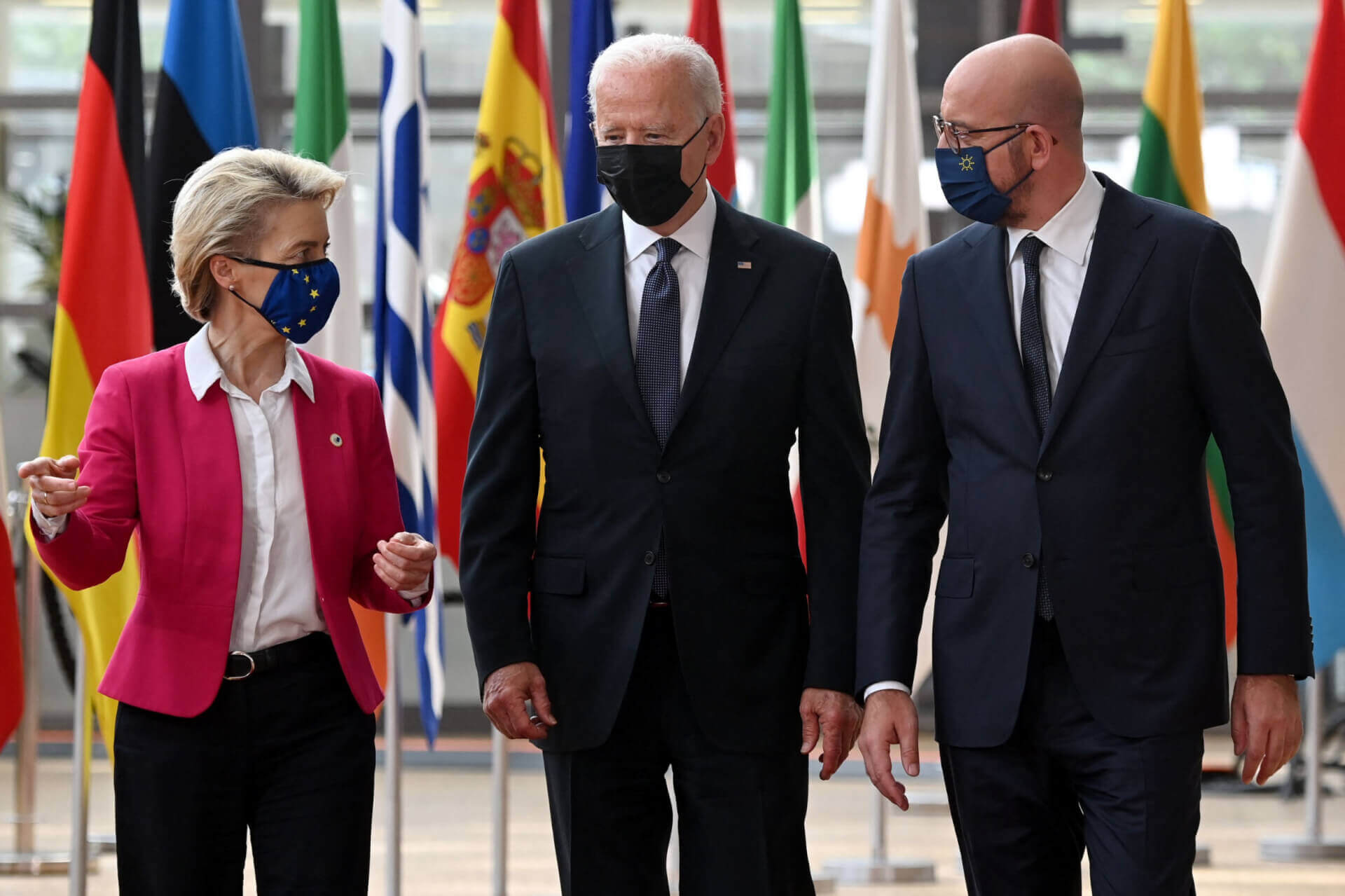United States President Joe Biden met the European Union (EU) leaders on Tuesday to discuss the transatlantic partnership and set new agendas for post-pandemic economic recovery. After meeting G7 plus and NATO leaders, the US President landed in Brussels to forge new alliances and partnerships with the EU leaders and discuss climate change, economic cooperation and defence ties.
While speaking to reporters at the Europa building, Biden said, “We have great opportunity to work with EU as well as NATO... It’s in the overwhelming interest of the United States of America to have a great relationship with NATO and the EU.” The President of the European Commission, Ursula von der Leyen, expressed her gratitude and said, “The fact that you’re coming so early in your mandate underlines your personal touch to the EU, and we appreciate that.”
The statement released by the White House reflected on the objectives of the summit and underlined four main agendas: the COVID-19 pandemic and preparation for future health emergencies; climate change and plans to promote “green growth”; advancing bilateral cooperation on trade, investment, and technology; and uploading and implementing the principles of democracy and peace.
At the summit, both sides agreed to prioritise bringing an end to the pandemic and to this end pledged to support the COVAX alliance, which ensures equitable and affordable access to COVID-10 vaccines to poor and developing countries. Both sides committed to “vaccinate at least two-thirds of the world’s population by the end of 2022” and also agreed to establish a “COVID Manufacturing and Supply Chain Taskforce” to boost cooperation on vaccine production and address supply chain grievances. The task force will also facilitate the exchange of technology to counter and predict future health threats. They also agreed on reforms to strengthen WHO’s preparedness to deal with future global health emergencies.
The EU and the US also reiterated their commitment to meet the goals laid down by the Paris Agreement and agreed to cooperate on policies to counter “climate change, environmental degradation and the loss of biodiversity.” Keeping this in mind, they discussed the establishment of a ‘US-EU High-Level Climate Action Group’ to ensure zero-net emissions by 2050 to keep the global temperature within 1.5 degrees and facilitate cooperation on “sustainable finance.”
While discussing trade and investment, both sides agreed to establish an EU-US Trade and Technology Council (TTC) to boost cross-border business and investment. The TTC will ensure cooperation on research and technology while promoting “transatlantic commerce” and “privacy protections”. The leaders agreed to “create a cooperative framework for Large Civil Aircraft” and engage in dialogue to resolve issues regarding “steel and aluminium.” The Dutch Startup Association, in its letter to EU-US, called for the removal of “barriers to digital trade” and the promotion of innovation.
During their discussions on security and democracy, both sides presented a united front in rejecting autocracy and authoritarianism. The White House statement addressed several issues, including China and its increasing influence across the East and South China Seas, Russia, the Taiwan Strait, the perilous state of Hong Kong’s democracy, and human rights abuses in Xianjing, Belarus, and Tibet. On the topic of Israel and Palestine, the statement read: “The European Union and the United States...reaffirm the need for Israelis and Palestinians to enjoy equal measures of freedom, security, prosperity, and democracy based on a two-State solution.”
The summit served to ease trade tensions and helped both sides to present a united front before the much-anticipated meeting between President Biden and his Russian counterpart Vladimir Putin.
SUMMARY: US-EU Summit in Brussels
The United States and the European Union discuss global health challenges, investments, trade, climate change amongst other issues at the 2-day Summit
June 16, 2021

SOURCE: NEWSWEEK
